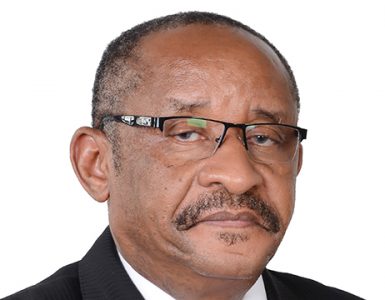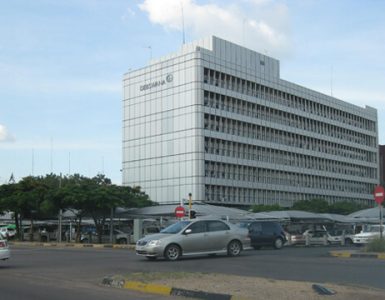Industry Spotlight: Energy Industry
Over the past 30 years, SADC countries have been challenged by a rapidly increasing gap between demand and supply for infrastructure, resulting in, among other things, insufficient energy supply. As a result of this infrastructure deficit, SADC member states introduced the Regional Development Infrastructure Master Plan (RIDMP) in August 2012. The plan is aimed at defining regional infrastructure requirements and conditions to facilitate key infrastructure development needs in the energy, water, transport, tourism, meteorology, and telecommunications sectors[21].Broadly defined, the energy sector encompasses all power generated and derived from the utilisation of physical and chemical resources including, but is not limited to, electricity generation, oil and gas, coal, nuclear power, solar, wind and other renewable energy sources. Due to the demand for energy from the natural resource endowments in SADC, the current priority energy subsectors are: coal-generated electricity, renewable energy, oil and gas[22]. All these are significant to catalyse infrastructure, investment and development. Moreover, energy investment is a vital foundation for regional integration due to the cross-border nature of energy investment projects.
The energy sector in the SADC region has historically been characterized by “scattered reserves” of natural gas and oil in Angola and along the coasts of Mozambique, coupled with rich coal deposits in South Africa, Zambia and Zimbabwe[23]. However, this changed when a potential 500 trillion cubic feet of natural gas was identified across Mozambique and South Africa along with 11.0 billion barrels of oil in Namibia in 2010 and 2011[24]. Furthermore, additional natural gas discoveries in the offshore Kwanza Basin in Angola indicate the area could hold an equivalent of 813.0 million barrels of oil[25]. Despite the numerous discoveries of natural resources in the region, biomass such as wood or other organic material is still the major source of energy, primarily due to the relatively low proportion of urban dwellers among SADC member states[26].
Apart from a few exceptions in regional city centres, the region has a total population of 294 million with 39.0% of the population living in urban areas, suggesting that the majority of increased demand for electricity will arise from the rural areas[27]. The Southern African Power Pool’s operating capacity was recorded to be 47.0 GW in 2016 against a demand of 52.5 GW; indicating a 10.3% electricity demand-capacity deficit[28]. Projects are in place, aspiring to achieve a total generation capacity of 32.7 GW by the end of 2022. However, these projects focus on grid extensions and on-grid generation growth. Electrifying the rural areas, where electricity demand is highest, requires high voltage lines. Subsequently, projects need to include a variety of available technologies in order to provide energy for on-grid and off-grid systems[29].
Another major challenge, apart from investment in new infrastructure, is the maintenance of existing energy infrastructure in SADC. This means that producers are typically operating at full, but not optimal, capacity. For example, the Zambian national energy producer (ZESCO) is currently operating at 56.9% capacity utilisation due to dilapidated infrastructure and insufficient investment. Despite the current installed capacity of 2.3 GW, ZESCO has 1.1 GW unutilised capacity because the state has not been able to invest in improving capacity utilisation due to capital constraints and a persistent public deficit[30]. Although the Zambian government has invested in projects to add 0.2 GW capacity in FY2017/18, this is insufficient to resolve persistent load shedding[31].
Electricity supply shortages, rapid climate change, and environmental degradation have been the main drivers toward renewable energy and energy efficiency initiatives through exploitation of solar, wind, biomass, geothermal, and mini and micro hydroelectric sources. The SADC region’s renewable energy sources provide great potential for the region to establish the correct infrastructure to avoid the negative environmental cost of non-renewable energy. However, there is need to stimulate the uptake of renewable energy technologies through firstly developing a harmonised regional renewable energy framework that will result in reduction of investment costs and improved reliability[32]. Secondly, it is important for SADC countries to invest in infrastructure maintenance and skills development to ensure localisation of infrastructure maintenance instead of turnkey solutions. Lastly, taking a lifetime and value-chain approach to infrastructure investment and maintenance is the first step to resolving energy and broader infrastructure deficits in SADC, and across Africa.
Technical and financial barriers have also contributed to low levels of uptake of renewable energy technologies to facilitate growth in energy demand, leaving a vast amount of untapped energy resource potential[33]. The energy sector is characterised by an abundance of potential energy sources, but a lack of relevant infrastructure to exploit them or limited capital to invest in meeting surplus energy demands.
For this reason, it is encouraging to note that there has been a renewed spirit in the involvement of development finance institutions (DFIs) in infrastructure development and regional integration generally. Notable regional DFIs championing regional infrastructure investment include the AfDB, the DBSA and the Industrial Development Corporation. Some of the key energy projects that these DFIs are involved in include:
- Maamba Collieries Power Generation Project, USD 150.0 million, Zambia, funded by AfDB.
- !Ka XU Solar One, USD 16.0 million, South Africa, funded by DBSA.
- Lake Turkana Wind Power Project, USD 4.8 million, Kenya, funded by AfDB.
Notwithstanding the progress achieved, if the sector is to develop to its full potential, more improvement is needed in terms of financing infrastructure projects. Participation of DFI’s and private investors, in collaboration with regional bodies should be prioritised, to ensure the efficient planning and execution of such long-term strategic projects.
By Grace Nsomba
[21] SADC 2012. Regional Infrastructure Development Master Plan: Energy Sector Plan, Southern African Development Community: Gaborone. Available At: http://www.sadc.int/ [Last Accessed: 29 January 2017].
[22] SADC 2016. SADC Energy Monitor 2016: Baseline Study of the SADC Energy Sector, Southern African Development Community: Gaborone. Available At: https://www.sadc.int/ [Last Accessed 11 February 2017].
[23] REN21 2015. SADC Renewable Energy and Energy Efficiency Status Report, Renewable Energy Policy Network for the 21st Century: Paris. Available At: https://www.ren21.net/ [Last Accessed 19 February 2017].
[24] REN21 2015. SADC Renewable Energy and Energy Efficiency Status Report, ibid.
[25] Sonangol 2004. ‘Deepwater Frontier’, Sonangol Universe, Issue 2, pp.: 8-13. Available At: http://www.sonangol.co.ao/ [Last Accessed 19 February 2017].
[26] SADC 2016. SADC Energy Monitor 2016: Baseline Study of the SADC Energy Sector, ibid.
[27] SADC 2016. SADC Energy Monitor 2016: Baseline Study of the SADC Energy Sector, ibid.
[28] SAPP 2016. SAPP Annual Report 2016: Meeting Demand through Sustainable Projects Implementation and Efficient Regional Electricity Trading, Southern African Power Pool: Harare. Available At: http://www.sapp.co.zw/ [Last Accessed 11 February 2017].
[29] Kapolo, L. T. & Lalk, J. 2012. Lack of Investment in Large Scale Generation Plants in the Southern African Power Pool: A Question of Policy, Political Will, Pricing or Planning?, University of Pretoria: Pretoria. Available At: http://www.up.ac.za/ [Date Accessed 13 February 2017].
[30] ZESCO 2015. Generation, on the ZESCO Website, viewed on 17 February 2017, from http://www.zesco.co.zm/; GoZM 2017. 2017 National Budget Speech, Government of the Republic of Zambia: Lusaka. Available At: http://www.parliament.gov.zm/ [Last Accessed: 17 February 2017].
[31] GoZM 2017. 2017 National Budget Speech, ibid.
[32] SADC 2016. SADC Energy Monitor 2016: Baseline Study of the SADC Energy Sector, ibid.
[33] UN 2003. Renewable Energy in Africa: Prospects and Limits, United Nations: New York. Available At: https://sustainabledevelopment.un.org/ [Date Accessed: 22 November 2016].




























